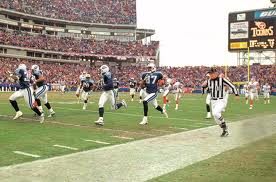I received an email this morning from a Geometry Instructor/Assistant Athletic Director who has been using the Tabor Rotation Framework at the Secondary Level for the past two years. Attached to it was a real-world assessment of the geometrical concept of transformations. I was engaged just by reading it! I wished I had had this type of meaningful connection when I was taking high school geometry!
Knowing that his work could help other secondary educators, I asked him to provide information, inspiration, and…his OUT OF THE BOX assessment of course!

What changes have you made in your instructional pedagogy in the last two years that you feel have been beneficial to you?
The most important change for me is the decision to always get better. I am always looking for something—something that, in my opinion, is innovative. I honestly have never worked this hard before, but I have also never felt this good about my instruction either.
How has this change benefited your students?
Because I am taking what I am doing more to heart, my kids are always engaged. WHY? They can see the passion that I have for what I am doing. Students are still students, but I know I am encouraging them to get better through good modeling.
What have been the challenges of using a framework, like Tabor Rotation, that uses small groups, stations, games, progress monitoring, etc.?
There are two challenges. First, you have to be willing to think outside the box and go outside your comfort level. Second, you have to be willing to work HARD.
How did you and your team address these challenges?
We continue to address these challenges. Those that aren’t willing to do the two things I just mentioned, they continue to struggle.
What has been the best part of the changes that have occurred in your school’s Math Department?
This past Wednesday we (algebra and geometry) teachers had to do a training to pilot an informational management software for our school district. During the presentation, I looked at our principal and said, “We are so far ahead of the curve.” It felt good to know that we have been and are continuing to do what is best for our students.
Which of the 14 Essential Elements of The Tabor Rotation Framework are the most important and why?
It is hard to say that one is more important than another. I do believe that Teacher Time and making the real-world connections are vitally important in every math classroom.
Why did you create the transformations assignment instead of just giving a test?
There are two reasons why I created this type of assessment instead of a traditional test. First, I didn’t like the way the book assessed the information. Second, after eight chapters and working hard since August, the kids are TIRED. I thought this might be a nice change to motivate them. They like to be able to think in their own ways. This allows them some freedom to express their thoughts, related to math of course.
What would you say to a teacher who says this “just looks like a lot of work…”?
It is worth it! This is the best I have felt about my teaching in a long time!
Hope this dedicated teacher’s thoughts and his Real-World Transformation Assessment inspire you and your students…it was exactly what I needed today!
“The key to success is to risk thinking unconventional thoughts. Convention is the enemy of progress. If you go down just one corridor of thought you never get to see what’s in the rooms leading off it.” -Trevor Baylis

